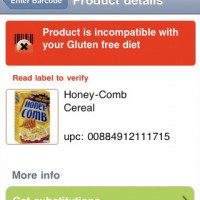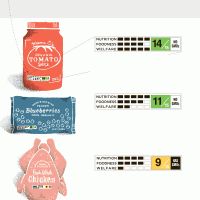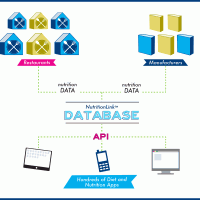An average of 21,000 new food and beverage products are introduced yearly to the public. Walk into an average grocery store, and you will likely be exposed to over 35,000 products. Trying to figure out if these products are good for you is no small challenge, which is why there is a wide array of tools to help eaters decide what to eat. Just how can technology be used to effectively package information about all of these products though? And moreover, how can tech further transform this information into material that is helpful and actionable?
Working at GoodGuide, I’ve gotten a chance to see just how important and challenging it is to manage this type of data.
While there are several ways technology can be leveraged to solve this problem, a main component of any solution must begin with a strong, malleable framework to structure and store the data. Creating this backbone could help manage several pressing issues around characterizing products that are often overlooked when building a food-related app. Ultimately, the framework could leverage metadata to make better recommendations and allow for optimized data accuracy. The following are a few reasons (based on my work at GoodGuide) why putting some thought into a data storage framework is worthwhile.
Leveraging Metadata
The most useful food apps help individuals make comparisons between similar types of foods like Pringles vs. Lays. Food can be compared across many different data points like calories, fat content, flavor and brand, so the challenge for developers is to determine how people think about food and what parameters they care about.
A very simple example of this is seen in food categorization. Most food apps and websites use the Symphony Information Resources (SymphonyIRI) categorization scheme to organize food data. SymphonyIRI takes grocery store inventory and buckets products based by a combination of type, purpose and location, designed for the primary goal of providing sales and marketing reports on individual categories. Relying solely on SymphonyIRI can have its drawbacks,however, because it lacks metadata on how people shop.
Take soup for example- an individual who is interested in buying soup for dinner is presented with multiple options at the grocery store (canned soup, boxed soup, frozen soup, even ready-made soup from the prepared foods section), but a traditional categorization scheme may not allow an app to provide comparisons across all of these options. A more agile framework that stores metadata beyond IRI categories could solve this problem. Similarly, someone trying to find a general snack will have different needs than someone looking to find a healthier chip. The challenge is building a product that caters to both of these types of users – one who wants between-category advice and another that wants within category advice.
Yet another example of how a well-designed framework could improve the user experience is seen through customization with company and brand data. Food app search engines are (for now!) blind – they don’t know if a consumer opts not to buy a product because they don’t like a particular brand. This blindness can be a hindrance when it comes to curating a list of search results, since products from the same brand tend to aggregate around the same rating. The result is a long list of search results from one brand that could very well be useless to a user who dislikes that brand. In the absence of collecting user preferences, the best option is to make use of company and brand metadata to tweak user interface and make search results more meaningful.
Food Product Data Availability
A major issue for all developers in this space (one that has been addressed on Food+Tech Connect before) is food product data availability. While there are many companies out there with large product databases (ESHA, Nutribase, Gladson, FoodFacts), it is difficult to find one that has all the data points necessary to calculate a rating or display a product. Even obtaining the most basic information, like nutrition facts and ingredient statement, is a challenge. Items like serving size, packaging type, size, brand and company that help users actually identify the product when using the service are rarely all available for a wide product universe. There is a major need in this space for more cost-effective, current data that can be easily integrated into existing networks.
A promising trend is seen in the advancement of optical character recognition (OCR) technology. Regardless of if or when OCR swoops in to save the day, the bottom line is that food data comes from many different sources. Food and tech startups should equip themselves with a system that can not only handle these different sources, but also run some quality control for data uniformity.
Relatedly, good food product data must be current. Having the most up-to-date information is essential from a credibility standpoint, but also from an accuracy standpoint, as most food ratings are based on algorithms that rely on this data. The frequent changes in food product formulations make maintaining data current a challenge, as there is currently no easy way to be alerted if cereal company X has removed high fructose corn syrup from their product. Additionally, system-wide website and mobile application updates do not typically happen on a daily basis, especially those sitting on thousands of datapoints. Sometimes, it can take up to three weeks for a simple data edit to reach a user. An agile data framework should anticipate these industry-wide challenges, with mechanisms in place to make small data tweaks. Ultimately, a well-designed data framework could mitigate some of the issues associated with keeping data current.
At the end of the day, juggling all these issues requires not only a robust dataset, but a data management infrastructure that is malleable enough to roll with the punches. In most cases, it will be messy and imperfect, but it is important to remember we’re all still on the learning curve. There is no denying that having a framework to store data is an essential component of building effective food tools. Data can be exceptionally powerful and compelling, but without the right legs for support, it will become stale and meaningless.







